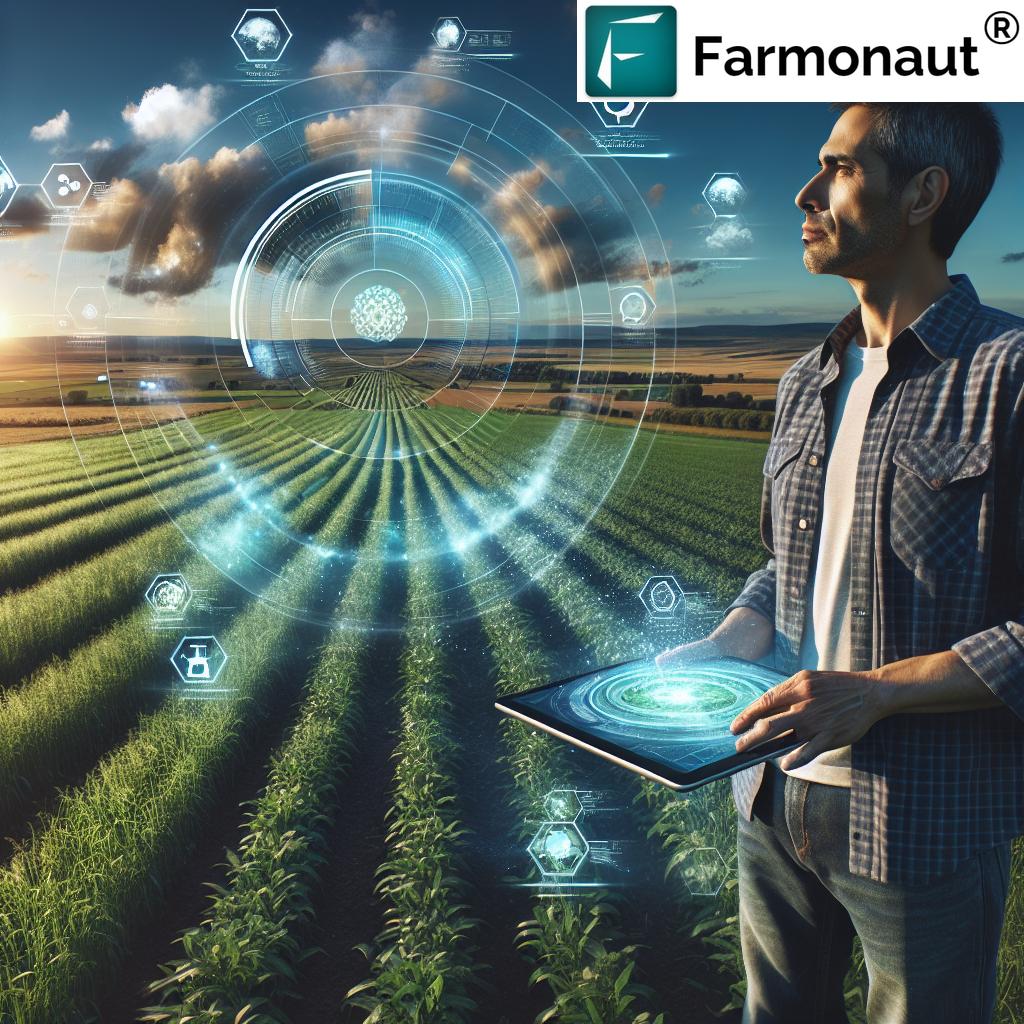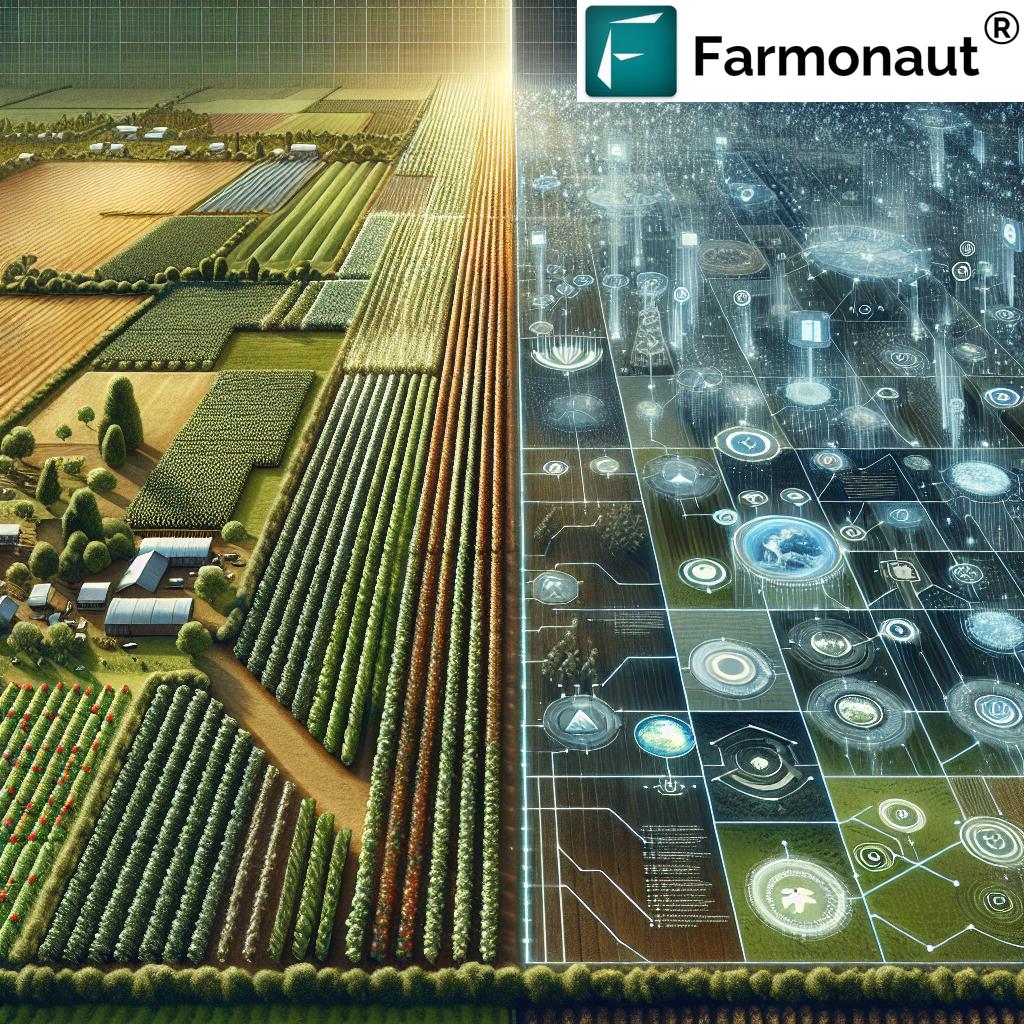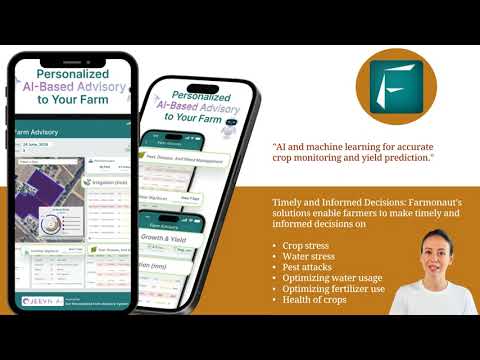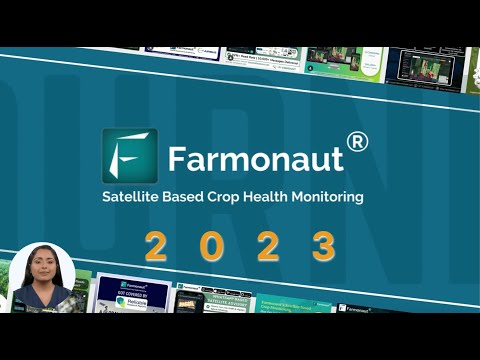Revolutionizing Agriculture: How Smart Farming Solutions and Satellite Imagery Are Optimizing Crop Yields
“Satellite imagery in smart farming can help reduce water usage by up to 30% while optimizing crop yields.”
In the rapidly evolving landscape of modern agriculture, we find ourselves at the forefront of a technological revolution that promises to transform the way we grow food and manage our precious natural resources. As we face the monumental challenge of feeding a growing global population, expected to reach nearly 10 billion by 2050, the integration of smart farming solutions and advanced agricultural technologies offers a beacon of hope for sustainable food production.
At Farmonaut, we are pioneering this transformation with our cutting-edge agritech platform that harnesses the power of satellite imagery, Internet of Things (IoT) sensors, and sophisticated data analytics to optimize crop yields and resource management. Our digital farm management system is designed to empower farmers with the tools and insights they need to make informed decisions, ultimately reducing water usage and chemical inputs while maximizing productivity.

The Evolution of Agriculture: From Traditional to Smart Farming
Agriculture has come a long way since its inception thousands of years ago. From manual labor and animal-drawn plows to the mechanization of the industrial revolution, each era has brought significant advancements. However, the current digital age is ushering in a transformation like no other. Smart farming, also known as precision agriculture, is revolutionizing the agricultural sector by integrating technology, data, and intelligence into every aspect of farm management.
Key components of smart farming include:
- Satellite imagery for crop monitoring
- IoT sensors for real-time data collection
- Artificial Intelligence (AI) and Machine Learning (ML) for predictive analytics
- Automated irrigation systems
- Precision application of fertilizers and pesticides
- Drones for aerial surveying and targeted treatments
These technologies work in concert to provide farmers with unprecedented insights into their fields, enabling them to make data-driven decisions that optimize resource use and crop yields.
The Role of Satellite Imagery in Modern Agriculture
One of the most transformative technologies in smart farming is satellite imagery. At Farmonaut, we leverage advanced satellite data to provide farmers with a bird’s-eye view of their fields, offering insights that were previously unattainable. Here’s how satellite imagery is changing the game:
- Crop Health Monitoring: Multispectral satellite images allow us to analyze vegetation indices such as NDVI (Normalized Difference Vegetation Index), providing early detection of crop stress, disease, or pest infestations.
- Soil Moisture Analysis: Satellite data helps in assessing soil moisture levels across vast areas, enabling more efficient irrigation scheduling.
- Yield Prediction: By analyzing historical and current satellite data, we can forecast crop yields with increasing accuracy, helping farmers and markets prepare for upcoming harvests.
- Land Use Optimization: Satellite imagery assists in identifying the most suitable crops for different land parcels based on soil composition and microclimates.
Our platform integrates this satellite data with on-ground sensors and weather forecasts to provide a comprehensive view of farm conditions, enabling smarter decision-making at every stage of the crop cycle.
IoT and Sensors: The Nervous System of Smart Farms
While satellite imagery provides a macro-level view, IoT sensors act as the nervous system of smart farms, collecting granular data at the ground level. These sensors can measure:
- Soil moisture and temperature
- Air temperature and humidity
- Light intensity
- Wind speed and direction
- Rainfall
By integrating this data with our satellite imagery and AI-powered analytics, we create a holistic picture of farm conditions. This integration allows for precise control of irrigation systems, optimal timing for planting and harvesting, and early warning systems for potential issues.
Explore our comprehensive farm management solutions:
Data Analytics and AI: Turning Information into Action
The true power of smart farming lies in the ability to analyze vast amounts of data and convert it into actionable insights. Our AI-driven analytics engine, Jeevn AI, processes data from satellites, IoT sensors, and historical records to provide:
- Personalized crop management recommendations
- Predictive maintenance schedules for farm equipment
- Pest and disease outbreak forecasts
- Optimal resource allocation strategies
By leveraging machine learning algorithms, our system continuously improves its predictions and recommendations, adapting to the unique conditions of each farm and region.
“By 2050, smart farming solutions will be crucial in feeding a global population approaching 10 billion people.”
Climate-Smart Agriculture: Adapting to Environmental Challenges
As climate change poses increasing challenges to agriculture, the need for adaptive and resilient farming practices has never been more critical. Climate-smart agriculture (CSA) is an approach that helps transform agricultural systems to support food security under new climate realities. Our platform supports CSA through:
- Weather Forecasting: Integrating local and global weather data to provide accurate, farm-specific forecasts.
- Drought Resistance: Recommending drought-resistant crop varieties and water conservation techniques based on climate projections.
- Carbon Footprint Tracking: Monitoring and reporting on farm carbon emissions, enabling farmers to participate in carbon credit markets.
- Adaptive Planting Schedules: Adjusting planting and harvesting times to align with changing seasonal patterns.
By embracing these climate-smart practices, farmers can not only adapt to climate change but also contribute to its mitigation through more sustainable agricultural methods.
Resource Optimization: Doing More with Less
One of the most significant benefits of smart farming solutions is the ability to optimize resource use. This is particularly crucial as we face increasing pressure on water resources and the need to reduce chemical inputs. Our platform enables:
- Precision Irrigation: Using soil moisture sensors and evapotranspiration data to apply water only where and when it’s needed, reducing waste and improving crop health.
- Targeted Fertilizer Application: Analyzing soil nutrient levels to create variable-rate application maps, ensuring that fertilizers are used efficiently.
- Integrated Pest Management: Combining pest monitoring data with predictive models to minimize pesticide use while effectively managing pest populations.
These practices not only reduce input costs for farmers but also minimize the environmental impact of agriculture, promoting long-term sustainability.
Empowering Farmers: From Data to Decisions
At the heart of our mission is the empowerment of farmers. We believe that by providing access to advanced technologies and data-driven insights, we can help farmers of all scales make better decisions and improve their livelihoods. Our platform is designed to be:
- User-Friendly: Intuitive interfaces that make complex data easily understandable.
- Accessible: Cloud-based solutions that can be accessed from any device with an internet connection.
- Scalable: Suitable for small-holder farmers as well as large agricultural enterprises.
- Customizable: Adaptable to different crops, regions, and farming practices.
By democratizing access to advanced agricultural technologies, we’re helping to level the playing field and ensure that farmers of all sizes can benefit from the latest innovations in agritech.
For developers looking to integrate our technology into their own solutions, explore our API:
The Future of Agriculture: Trends and Innovations
As we look to the future, several emerging trends and innovations promise to further revolutionize agriculture:
- Blockchain for Traceability: Ensuring transparency and security in agricultural supply chains.
- Vertical Farming: Maximizing production in urban areas with limited space.
- Gene Editing: Developing more resilient and nutritious crop varieties.
- Autonomous Farm Machinery: Reducing labor costs and increasing operational efficiency.
- Artificial Intelligence in Crop Breeding: Accelerating the development of new crop varieties adapted to changing climates.
At Farmonaut, we’re constantly innovating to stay at the forefront of these trends, ensuring that our platform evolves to meet the changing needs of farmers and the agricultural sector.

Smart Farming Solutions Comparison
| Farming Aspect | Traditional Method | Smart Farming Solution | Estimated Efficiency Improvement | Environmental Impact |
|---|---|---|---|---|
| Water Management | Scheduled irrigation | Precision irrigation based on soil moisture sensors and satellite data | 30-50% water savings | Reduced water waste, improved water conservation |
| Pest Control | Blanket spraying of pesticides | Targeted application based on pest monitoring and predictive models | 40-60% reduction in pesticide use | Decreased chemical runoff, protection of beneficial insects |
| Fertilizer Application | Uniform application across fields | Variable-rate application based on soil nutrient analysis | 20-30% increase in nutrient use efficiency | Reduced nutrient runoff, improved soil health |
| Crop Monitoring | Manual field inspections | Satellite imagery and drone surveys for early detection of issues | 70-80% improvement in early problem detection | Timely interventions leading to reduced crop losses |
| Yield Prediction | Historical averages and visual estimates | AI-powered analysis of satellite data and on-ground sensors | 85-95% accuracy in yield forecasts | Better market planning, reduced food waste |
Challenges and Considerations
While the benefits of smart farming solutions are clear, it’s important to acknowledge the challenges and considerations in their implementation:
- Initial Investment: The upfront costs of adopting smart farming technologies can be significant, especially for small-scale farmers.
- Digital Literacy: Farmers need training and support to effectively use digital tools and interpret data.
- Data Privacy and Security: As farming becomes more data-driven, ensuring the security and privacy of farm data is crucial.
- Connectivity: Reliable internet access is essential for many smart farming solutions, which can be a challenge in remote rural areas.
- Integration with Existing Systems: Ensuring compatibility with existing farm equipment and practices is important for smooth adoption.
At Farmonaut, we’re committed to addressing these challenges through affordable solutions, comprehensive training programs, robust data security measures, and flexible implementation strategies that can work with varying levels of connectivity and existing farm setups.
The Role of Policy and Collaboration
The widespread adoption of smart farming solutions requires supportive policies and collaborative efforts across the agricultural ecosystem. Key areas of focus include:
- Government Incentives: Policies that encourage the adoption of sustainable and efficient farming practices.
- Research and Development: Continued investment in agricultural research to drive innovation in smart farming technologies.
- Education and Training: Programs to build digital skills among farmers and agricultural workers.
- Public-Private Partnerships: Collaborations between technology providers, research institutions, and government agencies to accelerate the development and deployment of smart farming solutions.
We advocate for these supportive measures and actively participate in industry initiatives to promote the advancement of smart farming technologies.
Conclusion: A Smart Future for Agriculture
As we stand at the cusp of a new era in agriculture, the potential of smart farming solutions to address global food security challenges while promoting environmental sustainability is immense. By harnessing the power of satellite imagery, IoT sensors, and advanced data analytics, we can transform traditional farming practices into a more efficient, productive, and sustainable industry.
At Farmonaut, we’re proud to be at the forefront of this agricultural revolution, providing innovative solutions that empower farmers, optimize resource use, and contribute to a more food-secure future. As we continue to innovate and expand our services, we invite farmers, agribusinesses, and agricultural stakeholders to join us in embracing the smart farming revolution.
Together, we can cultivate a future where technology and tradition work hand in hand to feed the world sustainably.
Frequently Asked Questions (FAQ)
- What is smart farming?
Smart farming, also known as precision agriculture, is the application of modern information and communication technologies to agriculture. It uses data from various sources like satellite imagery, IoT sensors, and weather forecasts to optimize farming practices, increase efficiency, and improve crop yields. - How does satellite imagery benefit farmers?
Satellite imagery provides farmers with a bird’s-eye view of their fields, allowing them to monitor crop health, detect issues early, assess soil moisture levels, and predict yields. This information helps in making informed decisions about irrigation, fertilization, and pest management. - What types of data does Farmonaut’s platform use?
Farmonaut’s platform integrates data from multiple sources, including satellite imagery, IoT sensors, weather stations, and historical farm records. This comprehensive data set is analyzed to provide actionable insights for farm management. - Is Farmonaut’s technology suitable for small-scale farmers?
Yes, Farmonaut’s solutions are designed to be scalable and accessible to farmers of all sizes. Our platform offers affordable options that can benefit small-scale farmers by providing valuable insights without the need for expensive on-farm equipment. - How does smart farming contribute to sustainability?
Smart farming promotes sustainability by optimizing resource use, reducing chemical inputs, conserving water, and minimizing environmental impact. It also helps farmers adapt to climate change and implement more resilient farming practices. - Can Farmonaut’s technology integrate with existing farm equipment?
Farmonaut’s platform is designed to be flexible and can integrate with a wide range of existing farm equipment and management systems. Our team works with farmers to ensure smooth integration and compatibility. - How secure is the data collected by Farmonaut?
We take data security very seriously. All data collected and processed by Farmonaut is protected using industry-standard encryption and security protocols. We adhere to strict privacy policies to ensure that farm data remains confidential and secure. - What support does Farmonaut offer for new users?
Farmonaut provides comprehensive support for new users, including training materials, webinars, and customer support services. Our team is dedicated to helping farmers make the most of our platform and technologies. - How often is satellite imagery updated on Farmonaut’s platform?
The frequency of satellite imagery updates depends on the specific service package. Generally, we provide updates every few days to weekly, ensuring that farmers have access to recent data for decision-making. - Can Farmonaut’s technology help with crop insurance claims?
Yes, Farmonaut’s satellite-based crop monitoring can provide valuable data for crop insurance claims. Our platform offers objective, data-driven evidence of crop conditions and yields, which can be used to support insurance claims in case of crop losses.






